H0LiCOW I. H0 Lenses in COSMOGRAIL’s Wellspring: Program Overview.
Strong gravitational lens systems with time delays between the multiple images allow measurements of time-delay distances, which are primarily sensitive to the Hubble constant that is key to probing dark energy, neutrino physics, and the spatial curvature of the Universe, as well as discovering new physics. We present H0LiCOW (H0 Lenses in COSMOGRAIL’s Wellspring), a program that aims to measure H0 with <3.5% uncertainty from five lens systems (B1608+656, RXJ1131−1231, HE0435−1223, WFI2033−4723 and HE 1104−1805, with Hubble Space Telescope images shown below).
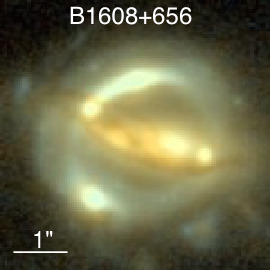
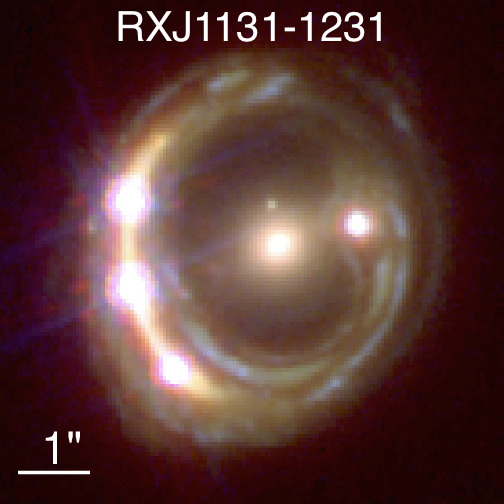
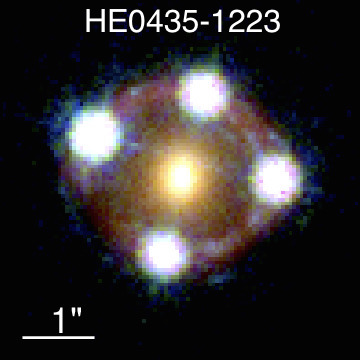
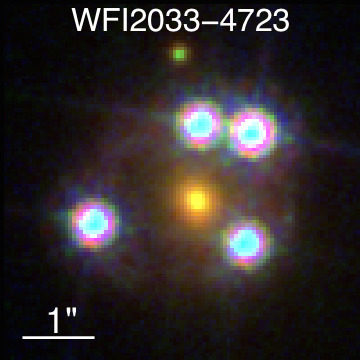
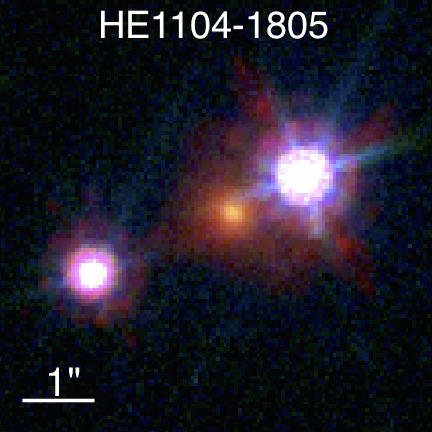
We have been acquiring (1) time delays through COSMOGRAIL and Very Large Array monitoring, (2) high-resolution Hubble Space Telescope imaging for the lens mass modeling, (3) wide-field imaging and spectroscopy to characterize the lens environment, and (4) moderate-resolution spectroscopy to obtain the stellar velocity dispersion of the lenses for mass modeling. In cosmological models with one-parameter extension to flat ΛCDM, we expect to measure H0 to better than 3.5% in most cosmological models, spatial curvature Ωk to 0.004, w to 0.14, and the effective number of neutrino species to 0.2 (1σ uncertainties) when combined with current CMB experiments. These are, respectively, a factor of ∼15, ∼2, and ∼1.5 tighter than CMB alone. Our data set will further enable us to study the stellar initial mass function of the lens galaxies, and the co-evolution of supermassive black holes and their host galaxies. This program will provide a foundation for extracting robustly cosmological distances from the hundreds of time-delay lenses that are expected to be discovered in current and future surveys.